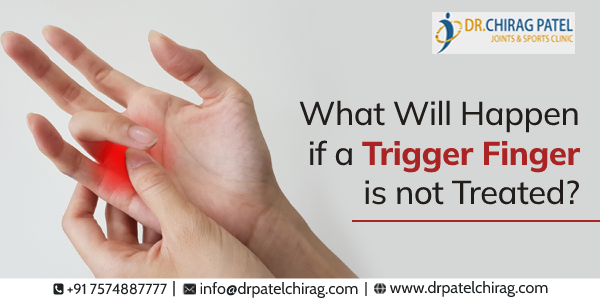A trigger finger is referred to as the condition in which a finger ends up locking when bent. It is painful and can end up causing extreme discomfort to the affected people. It is also referred to as stenosing tenosynovitis and can turn into a permanent condition if not treated soon after its diagnosis.
Symptoms of Trigger Finger
Before moving on to analyzing the consequences of overlooking the condition of the trigger finger, it is crucial to be aware of its symptoms.
Here is a list of a few such signs that indicate the condition of the trigger finger:
- Upon bending or straightening the affected finger, a painful snap is experienced by the patient.
- In the morning, the patient suffers from a stiff finger.
- The appearance of any kind of bump around the base of the affected finger.
- Inability to straighten out a locked finger.
What if the Trigger Finger is Left Untreated?
By labelling the condition of the trigger finger as a mild one, one may wish to overlook it and not consider any treatment options. However, just as is the case with any other medical condition – neglecting and not seeking treatment can cause the condition of the trigger finger to worsen.
In the case of trigger finger, the symptoms may appear mild. Over time, they gradually worsen – leading to a much more severe form of the condition. This includes swelling and excruciating pain in the affected fingers. Additionally, one affected finger can also pave the way for other fingers to get affected with this condition.
Since the ability to work with such a stiff and locked hand is almost impossible, completing daily tasks and doing basic chores can become a challenge for people affected by the condition of trigger finger. Hence, it is always advised to reach out to a specialist for effective treatment and therapy.
Treatment Options for Trigger Finger
The treatment option that any specialist might recommend to the affected person depends heavily upon the severity of the condition of the trigger finger.
Here is a list of a few of the most commonly opted for treatment methods:
- Adequate rest: If certain physical activity has been the reason behind the condition of the trigger finger, it is best to take a break from it. Providing your affected finger with adequate rest would help in the process of a speedy recovery.
- Splints: When the affected person chooses to reach out to a specialist, they may be prescribed splints to keep the finger in a still position.
- Stretching: The specialist may offer stretching exercises to the affected person for increasing the mobility capabilities of the finger. This physical form of therapy helps with the condition effectively.
- Medicines: Trigger finger causes inflammation within the body. Hence, the specialist can prescribe some anti-inflammatory medicines for the same.
Conclusion
While all the treatment options mentioned above are effective, sometimes surgery may be required to treat trigger fingers. For any kind of joint-related issue and treating conditions such as trigger finger, one should consider contacting Dr. Chirag Patel. His service includes treatment for knees to wrists and is quite well known in his area of specialization. Hence, if one is looking for trigger finger treatment or surgery – contacting Dr. Chirag Patel is a must.





